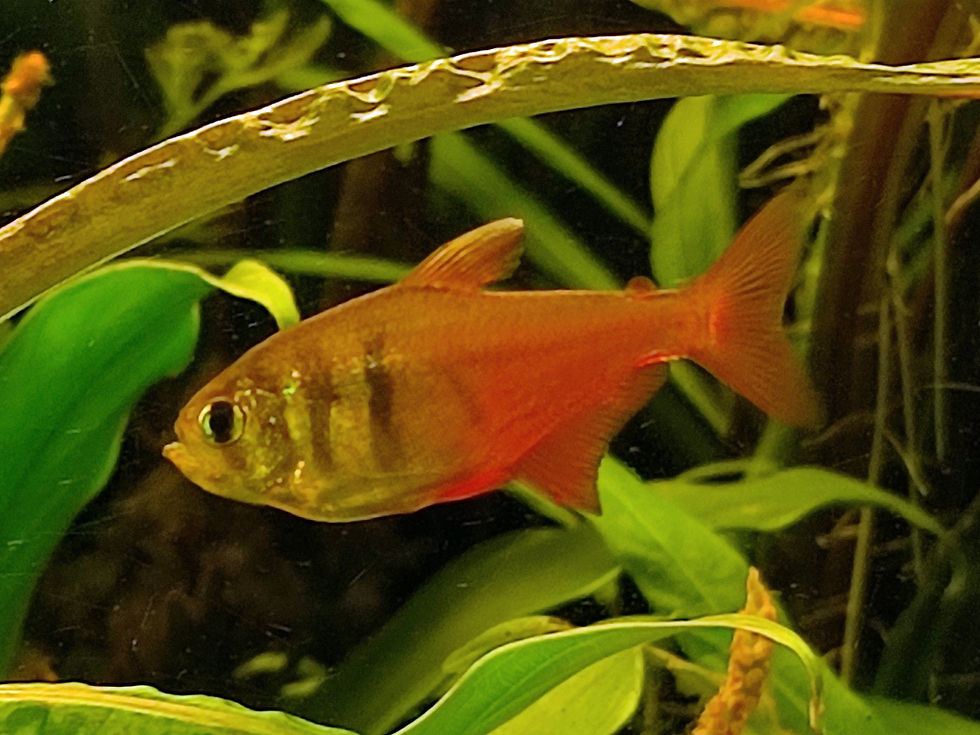A Spark Ignites: The Tale of the Flame Tetra
- Richard Yale
- Aug 31, 2025
- 1 min read
In the early 20th century, a vibrant fish from Brazil captivated aquarists worldwide. The Flame Tetra (Hyphessobrycon flammeus), also known as the Von Rio Tetra, was first introduced to Europe in 1920 by C. Bruening of Hamburg, Germany. In 1924, Dr. George S. Myers formally described the species, naming it Hyphessobrycon flammeus. Interestingly, the initial specimens Myers used for his description were bred in captivity, not collected from the wild. It wasn't until two decades later that Myers located wild populations near Rio de Janeiro.
These fish quickly became a favorite among aquarium enthusiasts, admired for their fiery red coloration and peaceful nature. They thrived in community tanks, coexisting harmoniously with other species. However, as urbanization and pollution increased in Brazil, the Flame Tetra's natural habitats began to deteriorate. By the 1990s, sightings in the wild became increasingly rare, and by 2004, the species was officially listed as endangered in Brazil.
Despite these challenges, the Flame Tetra found a new lease on life through the aquarium trade. Captive breeding programs flourished, especially in Southeast Asia, Europe, and the United States. These efforts not only preserved the species but also led to the development of various color morphs, such as golden, orange, and albino variants, which are not found in the wild.
Today, while the Flame Tetra remains rare in its native habitats, it thrives in aquariums around the world. Its resurgence stands as a testament to the positive impact of responsible captive breeding and the dedication of aquarists in preserving aquatic biodiversity.



Comments